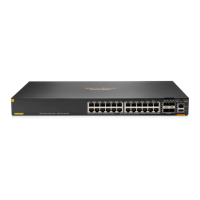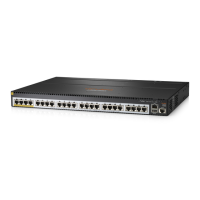36
Logging in to the Web interface
The device provides a built-in Web server that supports HTTP 1.0 and HTTPS. You can use a Web
browser to log in to and configure the device.
HTTPS uses SSL to ensure the integrity and security of data exchanged between the client and the
server, and is more secure than HTTP. You can define a certificate attribute-based access control
policy to allow only legal clients to access the Web interface.
Web login is disabled by default. To enable Web login, log in through the console port, assign an IP
address to the device for Web login, and configure HTTP or HTTPS login.
IMPORTANT:
Web login requests contain usernames and passwords. For security purposes, the device always
uses HTTPS to transfer Web login requests. To configure HTTP login, you must also enable the
HTTPS service. To configure HTTPS login, however, you do not need to enable the HTTP service.
FIPS compliance
The device supports the FIPS mode that complies with NIST FIPS 140-2 requirements. Support for
features, commands, and parameters might differ in FIPS mode and non-FIPS mode. For more
information about FIPS mode, see Security Configuration Guide.
HTTP is not supported in FIPS mode.
Configuring HTTP login
Step Command Remarks
1. (Optional.) Specify a fixed
verification code for Web
login.
web captcha
verification-code
By default, no fixed verification
code is configured for Web login.
A Web user must enter the
verification code displayed on the
login page at login.
2. Enter system view.
system-view
N/A
3. Enable the HTTP service.
ip http enable
By default, the HTTP service is
disabled.
4. Enable the HTTPS service.
ip https enable
By default, the HTTPS service is
disabled.
5. (Optional.) Specify the
HTTP service port number.
ip http port
port-number
The default HTTP service port
number is 80.
6. (Optional.) Set the Web
connection idle-timeout
timer.
web idle-timeout
minutes
By default, the Web connection
idle-timeout timer is 10 minutes.
7. (Optional.) Specify the
maximum number of online
HTTP users.
aaa session-limit http
max-sessions
By default, the maximum number
of concurrent HTTP users is 5.
Changing this setting does not
affect online users. If the current
number of online HTTP users is
equal to or greater than the new
setting, no additional HTTP users
can log in until online users log

